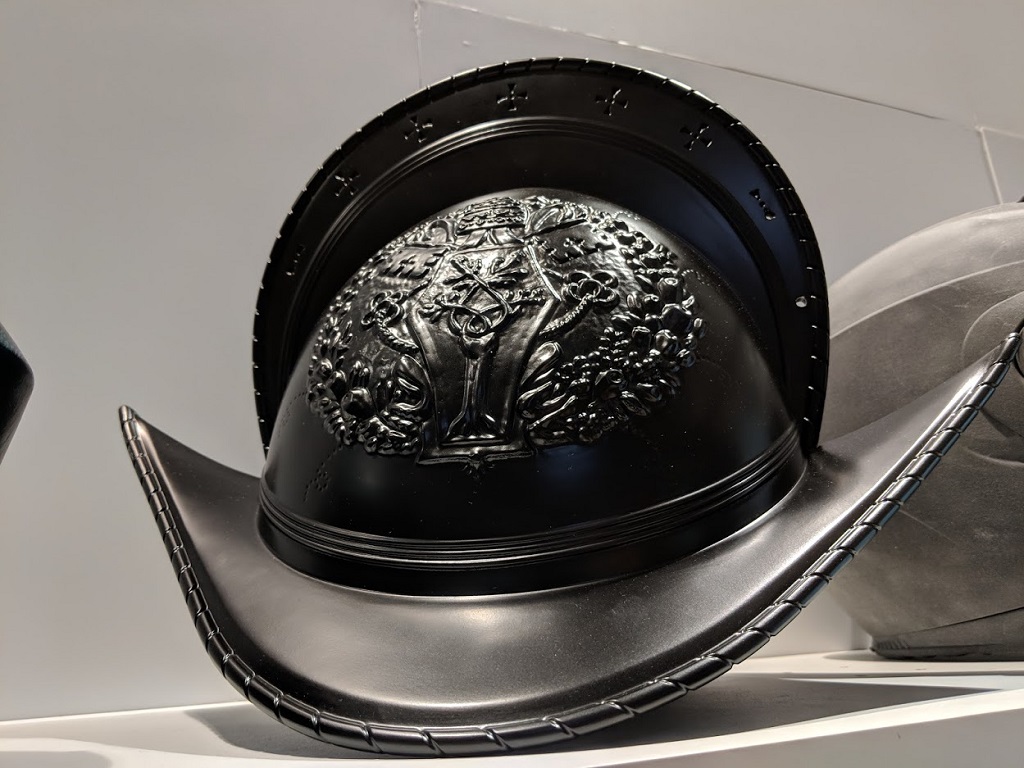![A Swiss Guard helmet on display with HP Inc. at IMTS 2018 [Image: Fabbaloo]](https://fabbaloo.com/wp-content/uploads/2020/05/IMG_20180911_115231_img_5eb09d9bc53a5.jpg)
Almost a year after introducing their new 3D printed helmets, the Swiss Guard are donning them for service.
The Swiss Guard are among the most famous guards in the world, devoted to protecting the Pope and known for their brightly colored ceremonial wear. An important part of that bedeckment is a helmet — always an important (and functional) part of a guard’s attire. In the Swiss Guards’ case, they had long been wearing metal helmets, designed in the 16th century, that look great but add a strain to their service. Heavy, hot (blistering in the sun), relatively easily dented: perhaps it was time for an update.
3D printing is increasingly coming into helmet manufacture. Along with 3D scanning to ensure precision in maintaining the classic design, 3D printing helped to reimagine how these helmets might be made anew.
Last May, Swiss Guard Commander Christoph Graf unveiled the new edition of the classic helmet. Shown at a press conference, Graf introduced the new 3D printed plastic helmet.
These helmets are now in use, being officially bestowed to the Guard last week for their 513th anniversary. The Swiss Guard are both the oldest and the smallest standing army in the world, and more than half a millennium since originally being designed, the new helmets seem timely indeed.
Switzerland-based 3d prototyp GmbH created the new helmets. Last year at AMX Expo, the company showed off the helmets, 3D printed in ASA material via FFF technology. Different technologies have come into play since, including HP’s MJF — the company had a helmet to display at September’s IMTS — for the final PVC pieces.
![[Image: Swissinfo]](https://fabbaloo.com/wp-content/uploads/2020/05/dsc_7696_img_5eb09d9c38775.jpg)
“The Vatican looked for a solution that would make the helmets more lightweight and comfortable for the guards, without sacrificing any of their iconic style. They were able to create new helmets that met their high standards of form and function and bring a beloved 16th century tradition into the 21st century,” said Michelle Bockman, HP’s Global Head of 3D Printing Commercial Expansion and Development.
Today’s Guard members are glad for the change. Until last Tuesday, they were wearing 2kg helmets that were a holdover from the 19th century; the new PVC helmets weigh in at a much lighter 570g. Making the helmets is likewise a lighter process — lighter on the wallet and on the clock, that is. Each helmet takes about a day, rather than nearly 130 hours, to create, and costs about $1,000. The helmets are paid for by public and private donations (3d prototyp offers more detail [German; pdf] on how these donations work, noting that donors’ names are included on the finished helmets).
![Swiss Guardsman Marcos Tavares Marques with a 3D printed helmet [Image: Swissinfo]](https://fabbaloo.com/wp-content/uploads/2020/05/dsc_5204_img_5eb09d9cb66f1.jpg)
On the 513th anniversary — January 22, 2019 — the Vatican had 98 of the new helmets delivered; they’ve ordered 120 for this year. The finished helmets are each spray painted black to maintain the look, and are lined in leather for additional wearability.
Lighterweight, UV protective, and still stylish, the new helmets provide an excellent way of preserving heritage with the convenience of new technologies.
Via 3d prototyp, HP, Swissinfo, and CNN











SPEE3D is placing their supersonic 3D printer in the Australian military to test its ability to 3D print metal parts in remote locations.